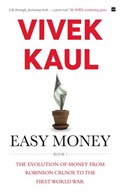We live in an era when coloured pieces of paper are deemed to be money. But this was not how things always were. In the United States, tobacco was money for longer than gold was. In parts of ancient India, almonds were money. Corn was money in Guatemala. In the rice-producing nations of Philippines, Japan and Burma, standardized portions of rice served as money. Salt was money in the Sahara Desert. How did these commodities disappear as money? What role did the rise of banking play in the rise of paper money? How has paper money at various points of time destroyed financial systems? And, most importantly, how do the same mistakes which were made earlier continue to be made in the modern era? Vivek Kaul answers these and many more questions in the first book in the Easy Money series.

